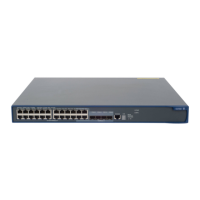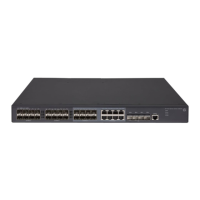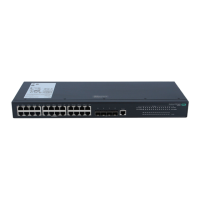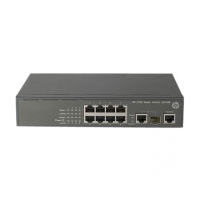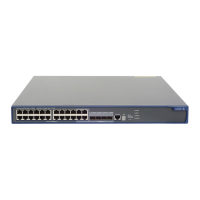304
Figure 77 Network diagram
Configuration procedure
1. Configure Router A:
# Configure the IP addresses of the serial interfaces.
<RouterA> system-view
[RouterA] interface serial 2/0
[RouterA-Serial2/0] ip address 1.1.2.1 24
[RouterA-Serial2/0] quit
[RouterA] interface serial 2/1
[RouterA-Serial2/1] ip address 1.1.3.1 24
[RouterA-Serial2/1] quit
# Configure ACL 3101 to match TCP packets.
[RouterA] acl number 3101
[RouterA-acl-adv-3101] rule permit tcp
[RouterA-acl-adv-3101] quit
# Configure Node 5 for policy aaa to forward TCP packets to next hop 1.1.2.2.
[RouterA] policy-based-route aaa permit node 5
[RouterA-pbr-aaa-5] if-match acl 3101
[RouterA-pbr-aaa-5] apply next-hop 1.1.2.2
[RouterA-pbr-aaa-5] quit
# Configure local PBR by applying policy aaa to Router A.
[RouterA] ip local policy-based-route aaa
2. On Router B, configure the IP address of the serial interface.
<RouterB> system-view
[RouterB] interface serial 2/0
[RouterB-Serial2/0] ip address 1.1.2.2 24
3. On Router C, configure the IP address of the serial interface.
<RouterC> system-view
[RouterC] interface serial 2/1
[RouterC-Serial2/1] ip address 1.1.3.2 24
Verifying the configuration
# Telnet to Router B on Router A. The operation succeeds.
# Telnet to Router C on Router A. The operation fails.
# Ping Router C from Router A. The operation succeeds.
Telnet uses TCP, and ping uses ICMP. The preceding results show that all TCP packets sent from Router A
are forwarded to the next hop 1.1.2.2, and other packets are forwarded through Serial 2/1. The local
PBR configuration is effective.
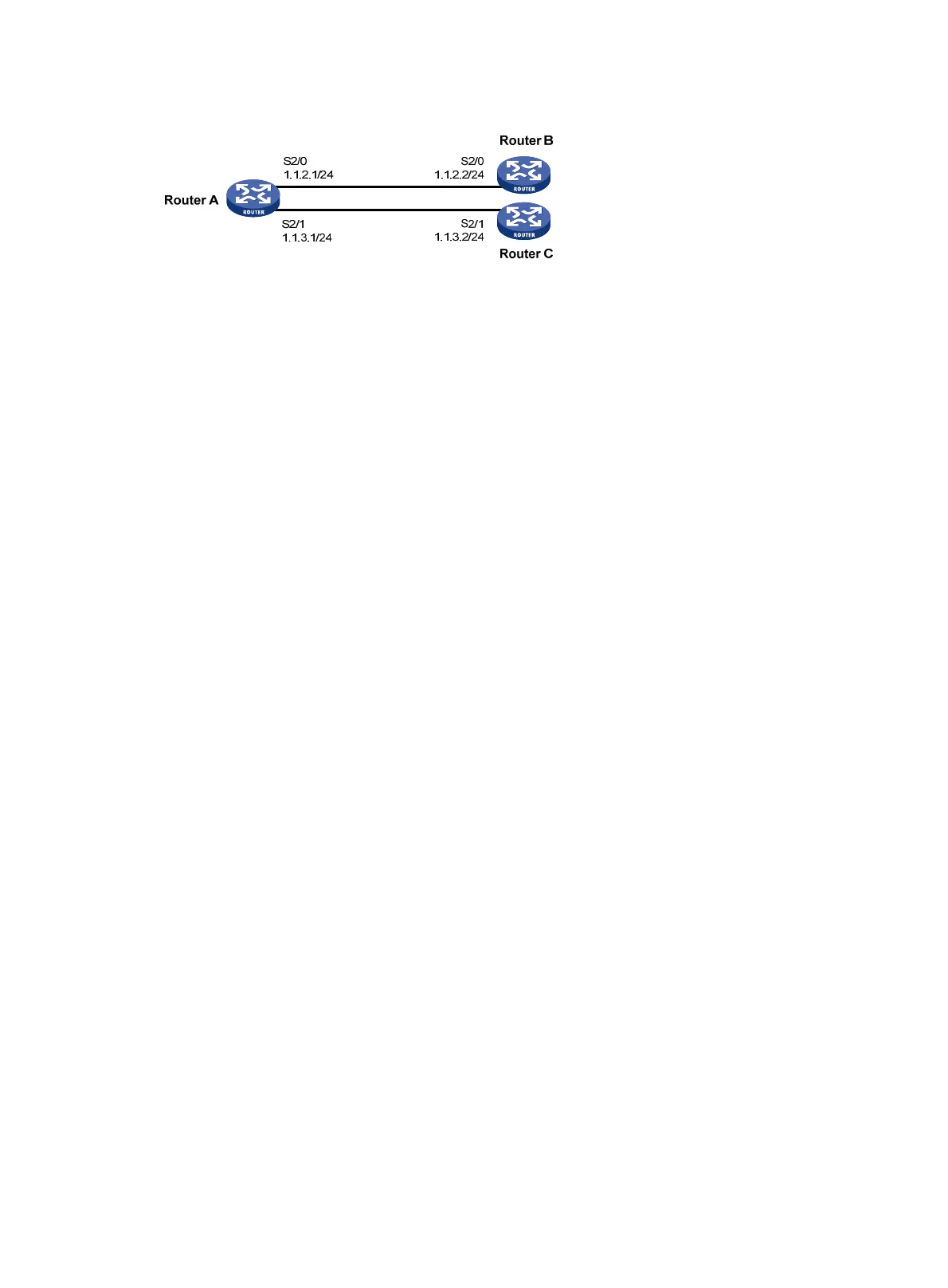